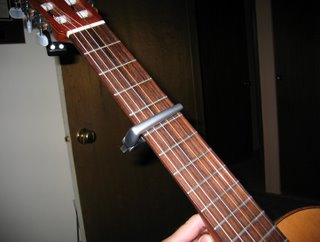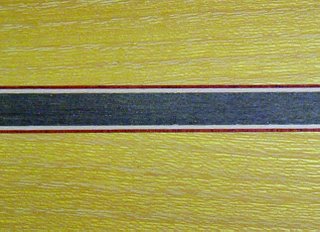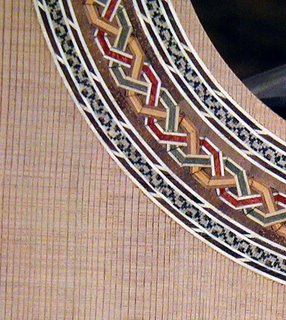After a discussion in a newsgroup with a guy who seems fairly bright, but who missed what I was trying to tell him big-time, even after I explained it a couple more tries, I am reminded that communication is, at best, an iffy busiess.
This event also brought up the memory of a funny story that illustrates this, and I want to share it with you:
A few years ago, the New Yorker sent a writer to cover the big biker rally held each year in Sturgis, North Dakota. The writer, being a nice, Jewish boy, was stepping very lightly -- New York writers not being big on the outlaw biker circuit, and there being thousands of serious bikers roaming about.
One morning, he came down for the brunch line, and a large, long-haired, bearded biker in his colors got to the line at about the same time. Not wanting to offend, the writer smiled, waved at the line, and said, "Go ahead."
Whereupon the big biker turned and fixed him with a cold-eyed stare and said, "Goat head? Who you callin' goat head ... ?"
No matter how hard you try, sometimes you just can't get it right ...
Saturday, July 29, 2006
Thursday, July 27, 2006
Songs in Steel


At the risk of turning this blog into a " ... and then I bought ..." series of posts, behold the latest additions to my household.
(Actually, I don't get a lot of new stuff; just so happens this particular summer has been good to me. I'm getting a new guitar and case in a couple months, I picked up a capo to go with those, and these wonderful knives are on the way. That's pretty much it.)
A bit about the knives:
The maker is Mushtaq Ali al Ansari, a Sufi, a martial artist of some note, and an all-around nice guy. You can find his blog here: http://tracelesswarrior.blogspot.com/
The knives are high-carbon tool steel. The kitchen knife (second picture) is designed for slicing vegetables and fruits and the like, has a handle of cherry wood, set with a brass rivet, and the finish on the steel is how it came out of the fire -- Mushtaq uses a fairly primitive set-up to make his blades, very hand-intensive. I hesitate to use the word "organic," but what the hell, that's how they seem.
The sheath knife, called Kuku Macan, (tiger's claw) has a handle of black walnut. The edge of the blade has been clay-tempered, ala the Japanese samurai sword forging method, which results in a blade with a hard edge and a springier back, so it will be much less likely to break.
If you look carefully, you can see the temper line, which the Japanese call hamon.
Both of the handles are finished in what Mushtaq says is a traditional Shaker furniture method, i.e., alternate applications of boiled linseed oil and bee's wax, until the wood is completely saturated, thus protecting it from drying or cracking.
The tiger's claw has a wrap of resin-impregnated hemp, in what is called a Turk's Knot, serving as a guard.
I am much impressed with Mushtaq's creations, having a fondness for working blades that are plain and not overly ornate. (I also have a kerambit made by his student, Chuck, that is very-well executed in a similar manner.)
Should you ever be in need of a good knife, the handmade work here is less than you'd pay for some machine-made stainless knives, and ever so much superior. Plus his waiting list is not that far out, currently -- a custom knifemaker's queue can sometimes run years long. And he will make you a fine leather sheath to match, too.
Can't beat that kind of deal.
The tiger claw, by the way, will be featured in a fight sequence in the upcoming novel, The Gangster Conspiracy, the final book in Chris Bunch's Star Risk series.
Monday, July 24, 2006
Don't Forget to Work Out ...
Still plugging away at the book deadline. It's going well, but it has taken center stage, and everything else I normally do is falling behind.
Generally, I manage a fair amount of exercise in a given week: Silat djurus every day, plus a silat class on Thursdays; yoga class one evening, walking the dogs two or three trips a day, and now and then, a trip to the weight room for some resistance work. When work takes over, however, these things get short shrift, and it doesn't take long before I miss them.
For me, exercise pays off in all kinds of ways -- I feel better, healthier, and every minute into the workout account is returned with interest. If I don't do it, I quickly start to feel a drop in energy, I get grumpy, and my stamina fades. I know this, and even so, it creeps up on me, and all of a sudden, I'm become a chair-potato who gets up but once every couple of hours all day, and that because I have to go to the bathroom.
Given that it has been the hottest it's ever been around these parts in the last few days -- 108 F. on Friday, 105 on Saturday, 102 Sunday, and just under a hundred so far today, (which ties the all-time record high in this part of Oregon ever, that 108) -- that's made it that much harder to go out back and work out -- I start to sweat before I ever get to the door, and it isn't cooling off at night -- three in morning, it's still 85 out there, which is also a record -- the highest low.
Still, I gotta get back to it. "Sound mind in a sound body." is not an either/or question for me ...
Generally, I manage a fair amount of exercise in a given week: Silat djurus every day, plus a silat class on Thursdays; yoga class one evening, walking the dogs two or three trips a day, and now and then, a trip to the weight room for some resistance work. When work takes over, however, these things get short shrift, and it doesn't take long before I miss them.
For me, exercise pays off in all kinds of ways -- I feel better, healthier, and every minute into the workout account is returned with interest. If I don't do it, I quickly start to feel a drop in energy, I get grumpy, and my stamina fades. I know this, and even so, it creeps up on me, and all of a sudden, I'm become a chair-potato who gets up but once every couple of hours all day, and that because I have to go to the bathroom.
Given that it has been the hottest it's ever been around these parts in the last few days -- 108 F. on Friday, 105 on Saturday, 102 Sunday, and just under a hundred so far today, (which ties the all-time record high in this part of Oregon ever, that 108) -- that's made it that much harder to go out back and work out -- I start to sweat before I ever get to the door, and it isn't cooling off at night -- three in morning, it's still 85 out there, which is also a record -- the highest low.
Still, I gotta get back to it. "Sound mind in a sound body." is not an either/or question for me ...
Monday, July 17, 2006
Guitar Gadgets


Those of you who are guitarists know what a capo is. Those of you who don't, it's a device that attaches to your guitar's fretboard and presses down on the strings, for the purpose of changing the key. This is sometimes useful for accompanying, say, a singer who sings in a key that is difficult to play on the guitar. Sometimes this is used for effect. When George Harrison plays "Here Comes the Sun," his guitar is in standard tuning, but he has a capo on the seventh fret, which is what gives it that tinkly sound ...
Um. Anyway, there are many brands of these. One of the most interesting ones I've found is made by a British firm, G7th, Ltd.
The original model was designed for steel-string acoustic guitars and works very well for them.
But since classical guitars generally have wider necks, and flat fretboards, the application of the G7th was somewhat limited. It could not be used past the fifth fret because it wouldn't reach across all six strings. (In the capo picture, the original is on the left, above.)
To attend to this, G7th has come out with a classical model (also a new one for twelve string guitars, which have wider fretboards.) The compression arm is longer, and the pad that presses upon the strings is flat. (The capo on the right.)
It works very well on a classical guitar, as far up as you can put it before you run into the thickening where the heel joins the neck to the body.
Plus, it looks so cool. You can see what it looks like on the guitar.
How it works is simple: You apply it by sliding it over the fret you want, and squeezing it shut. There is this wonderful little cam that locks it into place however hard you want it, and when you want to take it off, you just thumb the little lever down to open the jaws.
First-rate materials and construction, too.
Thursday, July 06, 2006
New Toy


I have been lucky enough to get a well-known and highly-respected luthier, Alan Carruth, to make a guitar for me. (And to get what is a kinfolk-deal price on it.)
Al, called "the dean of American luthiers" by Tim Brookes, in his book Guitar: An American Life, is building me a classical guitar. While the sounding board is of cedar, one of the two most common tonewoods, the sides and back are of a somewhat-unusual wood, Osage Orange. (In the U.S., this is a "trash" hardwood; it grows wild, and has been used mostly for fence posts.) Also called hedge-apple, after the fruit it produces, this is, according to Al, a drop-in replacement for rosewood. Traditionally, classical guitars often have rosewood backs and sides. For years, the wood of choice was Brazilian rosewood (it supposedly smells like roses when fresh-cut). This particular species is endangered, and dwindling supplies, cut before the ban, have driven the costs sky-high -- a good set of Brazilian rosewood might drive the price of a custom-guitar up a couple thousand dollars.
Luthiers have found replacements for Brazilian using Indian rosewood, as well as Australian and African hardwoods, and Al says that the tone of Osage Orange is somewhere between that of Brazilian and Indian rosewood. The only drawback is that the wood is orange when fresh cut, slowly turning darker brown as it ages.
Since I am more concerned with how it sounds than how it looks, the color is not as important to me as it might be to some.
Al's waiting list is long and getting longer, but he is currently addressing my instrument. Here, if I can manage it, are a couple of pictures. One is of the rosette, surrounding the sound hole; the other is of the back and center trim. Al's choice of woods for these are fascinating: The central braid has lines of bloodwood/maple (red/white), blue mahu with satinwood (green/off-white), and 'burning bush' with cherry (orange/red-brown). The background of the braid is walnut. The curlyques around the outside are also mahu/maple/cherry. The 'angled ladder' on either side of the curlyques is Indian rosewood/maple.
Probably be a couple months longer before the instrument is done, but I am tickled pink with Al's work.
Subscribe to:
Comments (Atom)